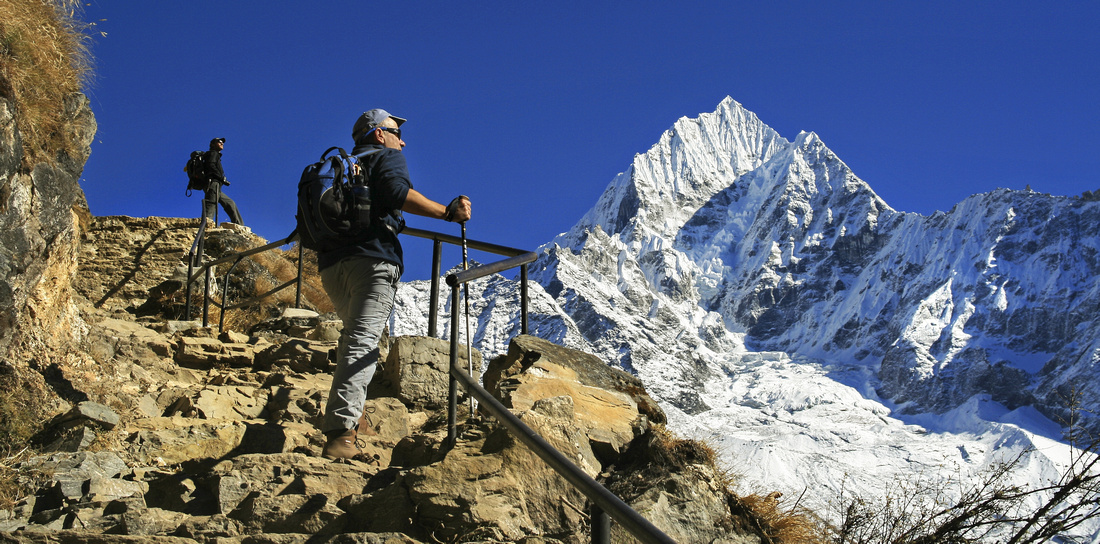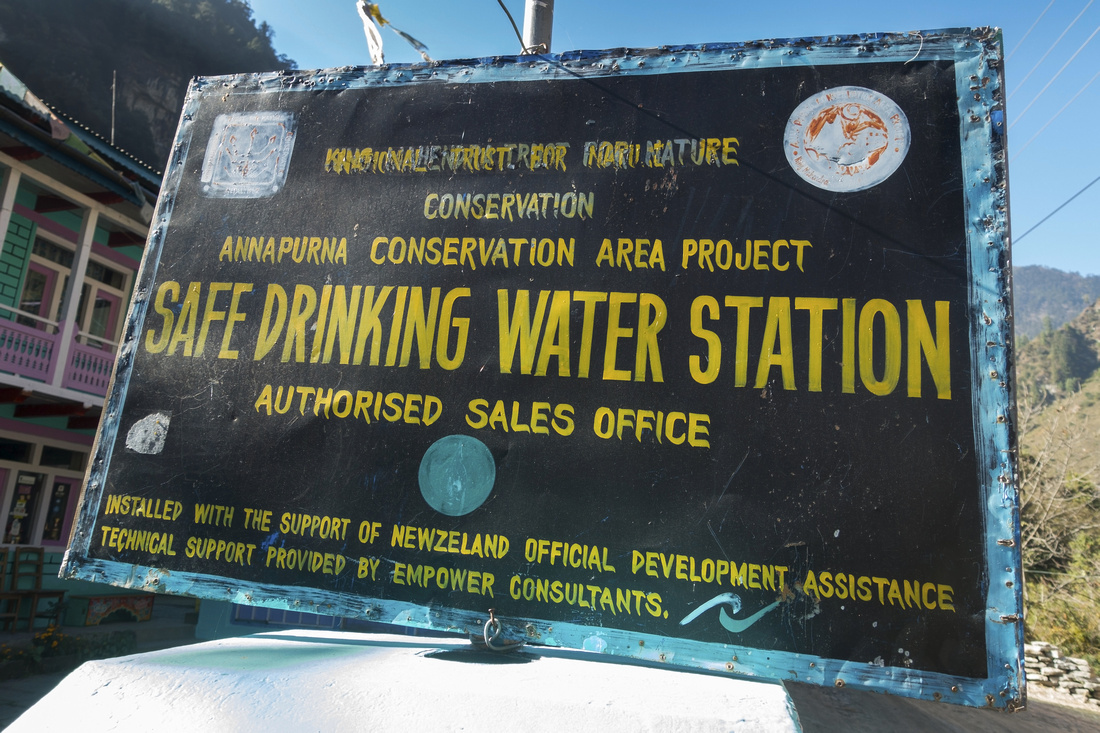Nepal Trekking Resources
Variety of Resources designed to help you prepare your Nepal Journey are summarized on this page. Select link below to learn more about each category
| Travel | Logistics | Gear | Altitude | Culture | Links |
|---|
Nepal Trekking Gear


Trekkers with light day packs enjoying views of snowy Mt. Thamserku above Namche Bazaar on Everest Base Camp Trek
Extensive gear guide is available on this site -- I used it for my preparations, and can not possibly beat wealth of information presented there. I also assume you are familiar with basic trekking/backpacking techniques. Here are some supplemental suggestions based on personal post-trek experience:
| Gear Item | Comment |
|---|---|
| Footwear |
Hiking boots are Essential. For everything else you can find a workaround (borrow, buy in Kathmandu/Pokhara etc etc) - but hiking boots must be well broken and fit 100%. You will hike daily 6-7 hours for several weeks and you don't want even a small blister. Do not hike in lightweight shoes (or heaven forbid, runners) - your need ankle support! For Annapurna Trek I hiked in Zamberlan Trail Lite GTX and they performed superbly! Also bring pair of sandals for trekking lodge - I use Keen Targhee for years and have been more than satisfied. Do not put your hiking boots in checked luggage; wear them on the plane, in case your luggage gets lost / delayed. |
| Clothing | Layering / flexibility is of utmost importance. I trekked Annapurnas in December when temps were already quite cold in higher elevations, but found basic fleece + lightweight North Pole goose down jacket (that also doubles as pillow!) + Helly Hansen shell more than sufficient. You need to be comfortable in the lodge after day of trekking, so pair of long johns + soft T-shirt, also used for sleeping, worked really well. |
| Other Hiking Gear |
|
| Toiletries | Toilet Paper! Bring lots, unless you want to use water as locals do. It can be bought in villages for a premium, but I simply brought couple of rolls from MEC, made for backpacking. Plan on extra, in case you get upset digestive tract (common high altitude problem). I also found useful small bottle of concentrated washing liquid, available in outdoor stores and used it in solar operated lodge showers. Small trekking towel, also bought at MEC, that also doubles as sunhat, dries fast and is extremely versatile is highly recommended. |
| Sleeping | Sleeping Bags are not necessary (if sleeping in trekking lodges). Covers / blankets are quite warm. I rented sleeping bag in Kathmandu and ended up using it just 1 night, and even then it was not necessary. It will just take space. However sleeping bag liner is highly recommended. It adds extra layer of warmth, and gives you ability to sleep in something clean as lodge blankets are sometimes quite dirty. I got mine at Atmosphere for ~85 CAD; it is ultra lightweight and packs very well. |
| Electronics | Memory Banks! Charging is available at lodges (sometimes free lower down, 100-300 rupees higher up) but in high season you will be competing with other trekkers for limited number of outlets. Memory bank solves that problem. Be weary of airline rules: Some require memory banks to be checked in, some forbid it. Best to check directly at airline counter - I was brought back through security in Bangkok International Airport because of it. |
| Photography | Sony Rx-100! Photos make memories and are essential part of Nepal treks. There are many options available today that fit different budgets. Phone cameras are getting better and better and for some trekkers this will be sufficient. Being a photographer that sells photos commercially I need something better. I find little Sony Rx-100 camera indispensable; very light, fits in the pocket and quality (with sufficient light) is very good. I also trek with Canon 6D full-frame SLR with 24-105L lens; some very high end images in Annapurna range were produced with it. I also carried lightweight Sirui carbon-fibre tripod planing on some night sky photography, but ended up not using it -- it was simply too cold. Universal advice can not be given; use something that works for you, keeping in mind this is likely once-in-a-lifetime trek. |
Water Treatment
Safe Drinking Water Station in Odar Village on Annapurna Circuit
Staying well hydrated is key for successful trek, and you need clearly defined water drinking strategy. Nepal water is not safe to drink (tap or streams) - it contains parasites that would cause diarrhea and make you sick. There are 3 options:
| Option | Comment |
|---|---|
| Bottled Water | Widely available in Trekking lodges or Village shopping stores. Advantage -- least amount of worry ('pay as you go'); Disadvantage: Costs more, and more importantly -- waste. Nepal is full of plastic discarded by trekkers. In addition, can you be sure this is purified drinking water, or local simply filled bottle from the stream and put cap on it? |
| Safe Drinking Water Stations | Installed with support from New Zealand development assistance. Safe and even if not totally free quite economical. Disadvantage: Available infrequently and only in lower villages. |
| Self Purification | D.I.Y approach. Variety of water purification techniques are widely available: Filters, Tablets, Steripen / UV Rays, etc. |
On my Annapurna trek I simply used Aquatabs, purchased cheaply at MEC in Calgary. Water did not taste great, but it did the job.
